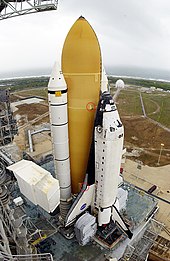Space shuttle Columbia was scheduled to reenter the atmosphere on February 1, 2003. At 8:10 a.m., the capsule communicator informed the crew that they were approved to conduct the deburn. At 8:15, the cruise successfully executed the burn, which lasted for two minutes and thirty-eight seconds.
Space shuttle Columbia reentered the atmosphere at 8:44 a.m. at an altitude of four hundred thousand feet. The shuttle’s Thermal Protection System (TPS) was damaged and allowed hot air to enter and begin melting the aluminum structure.
Four and a half minutes after the shuttle reentered, a sensor began recording greater than normal amounts of strain on the left wing. However, the sensor’s data was recorded to internal storage and not transmitted to the ground controllers or the crew. As a result, the orbiter began turning to the left, which was not noticed by the crew or mission control. Not long after, sensors in the left wheel also reported a temperature rise.

At 8:53 a.m., Columbia crossover the California coast at an altitude of two hundred sixty-one thousand six hundred feet. The temperature of its wings was at an estimated 2.800°F (1,540° C). The shuttle then shed several pieces of debris, and a sudden increase in brightness around the shuttle could be seen from the ground. The shuttle continued to travel over Utah, Arizona, New Mexico, and Texas, where observers reported seeing debris come off the shuttle.
8:58 a.m. was when the crew first received an indication of a problem. At that time, the backup flight software monitor began displaying fault messages for a loss of pressure in the tires of the left landing gear. They then received indications that the status of the left landing gear was unknown.
Mission control lost its signal from Colombia at 8:59 a.m. The last message received from the space shuttle was of Rick Husband, the commander, saying, “Roger, uh…” It is believed that the space shuttle lost control only a matter of seconds later. The shuttle began flying along a ballistic trajectory significantly steeper than it should have been. The acceleration that the crew experienced would most likely have caused dizziness and disorientation, but they most likely would not have been incapacitated.
Autopilot was switched to manual control and reset to automatic mode at 9:00:03 a.m., a movement that indicates that either Husband or the pilot, William C. McCool, was still conscious. McCool’s final switch configurations suggest that he tried to restore the hydraulic systems sometime after 9:00:05 a.m.
At 9:00:18 a.m., the shuttle began a catastrophic breakup, and all unborn data recording ceased. By 9:00:25 a.m., the shuttle’s fore and aft sections had separated from one another. The sudden jerk caused the crew compartment to collide with the fuselage’s interior wall, resulting in a depressurization of the crew compartment by 9:00:35 a.m.
The signal loss from Colombia occurred at a time when the flight control team expected a brief communication outage as the orbiter stopped communication via the west tracking and data relay satellite (TDRS). Mission control was unaware of the inflight breakup and continued trying to reestablish contact with the shuttle. Expecting Columbia to be conducting its final maneuvers to land at 9:12 a.m., a mission control member received a phone call that discussed news coverage of the shuttles break up.
By 9:35 a.m., all debris and crew remains were estimated to have impacted the ground.


Leave a Reply